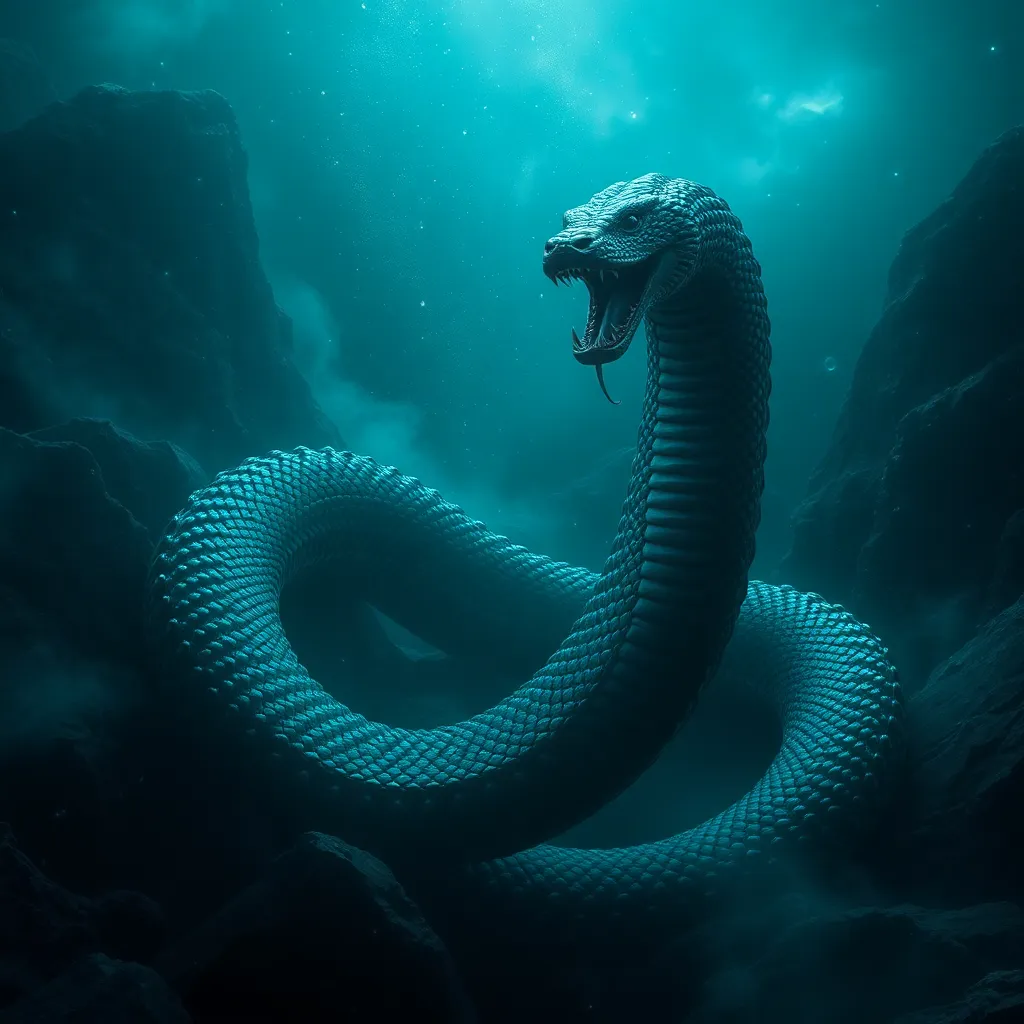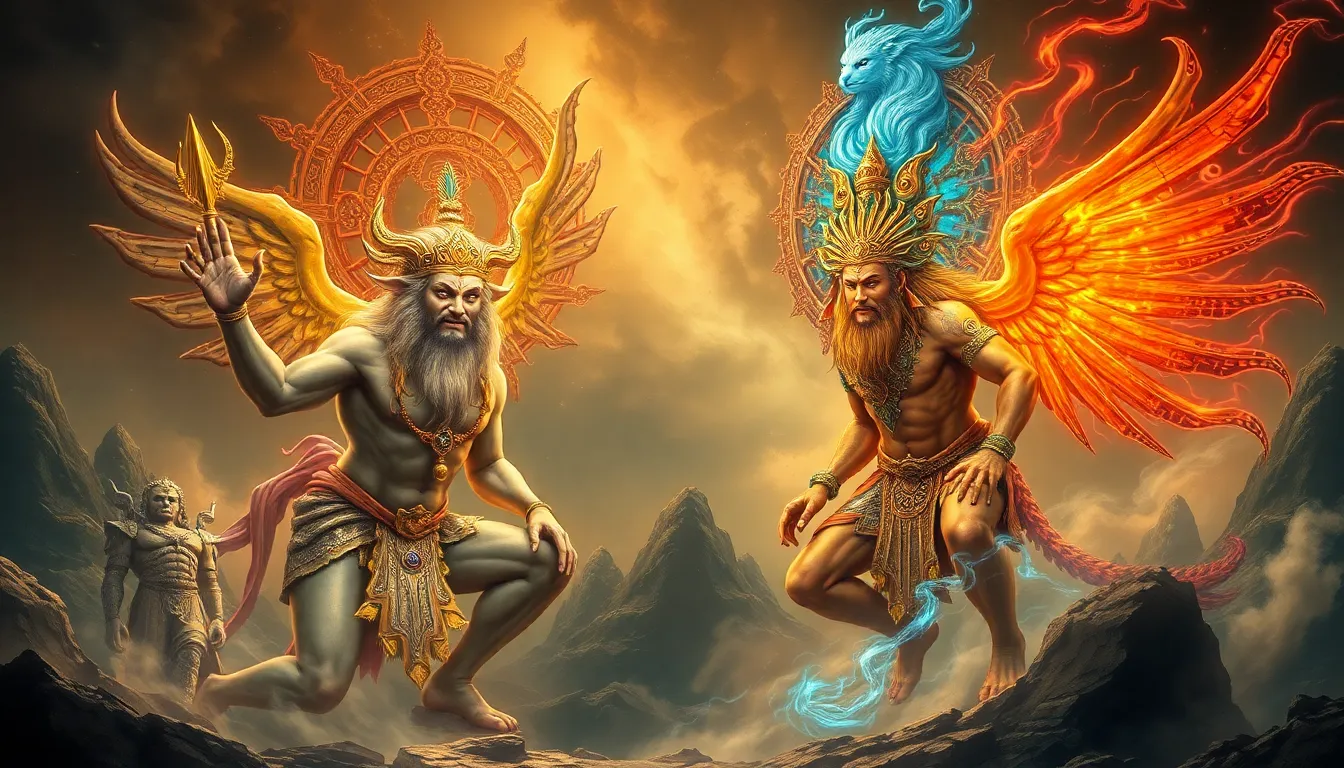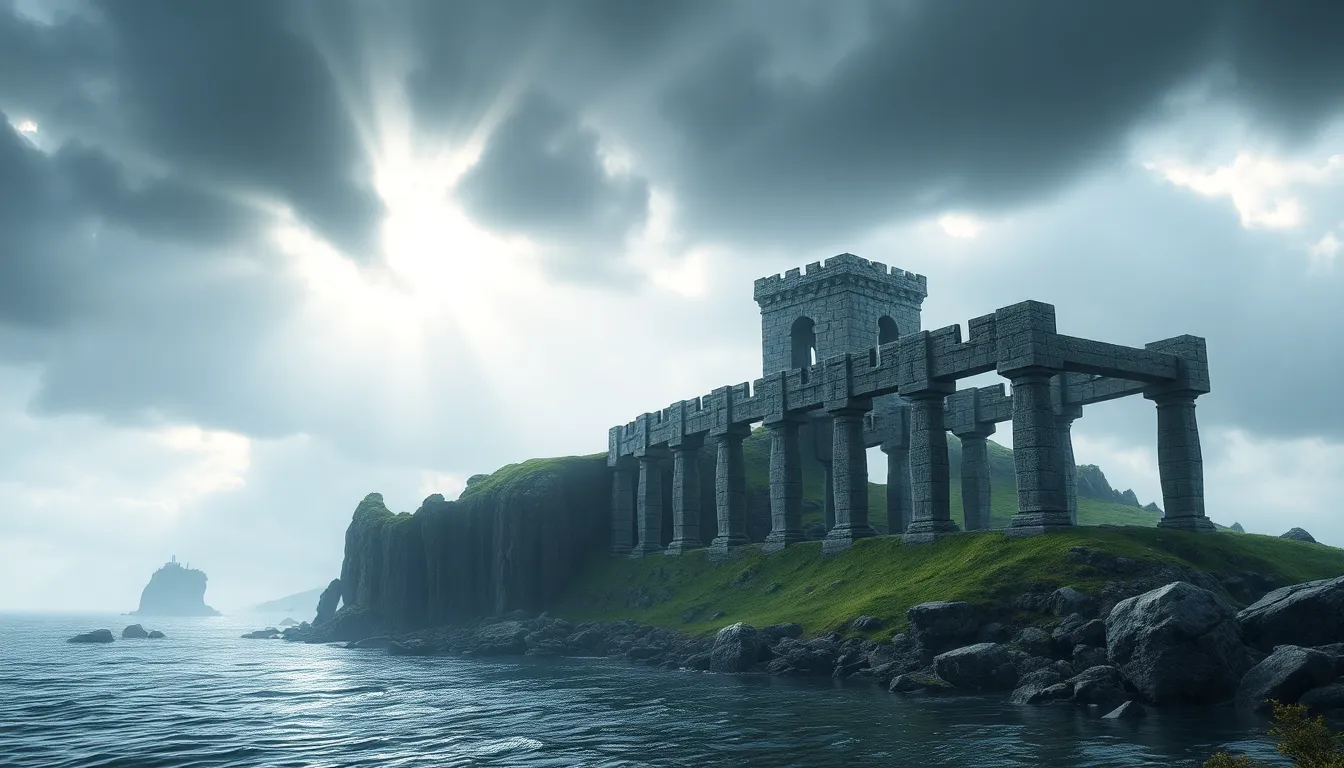The Serpent’s Art: Jörmungandr in Modern Art, Music, and Film
I. Introduction
Jörmungandr, often referred to as the Midgard Serpent, is a significant figure in Norse mythology. This colossal serpent encircles the Earth and plays a crucial role in the mythological narrative surrounding Ragnarok, the end of the world. As a symbol of chaos, destruction, and the cyclical nature of existence, Jörmungandr has transcended its mythological origins to become a potent cultural symbol in contemporary art, music, and film.
This article aims to explore the influence of Jörmungandr in various modern artistic expressions, examining how this ancient mythological creature continues to resonate with contemporary audiences and artists alike.
II. Jörmungandr: A Mythological Overview
A. Description and attributes of Jörmungandr
Jörmungandr is depicted as a massive serpent that stretches around Midgard (Earth) and bites its own tail, forming an ouroboros. This imagery symbolizes infinity and the cyclical nature of life and death. Jörmungandr is one of the three children of Loki, the trickster god, and is often associated with the ocean and storms.
B. Role in Norse cosmology and Ragnarok
In Norse cosmology, Jörmungandr has a pivotal role during Ragnarok, the prophesied apocalypse. It is foretold that Jörmungandr and Thor, the god of thunder, will face each other in a final battle, resulting in mutual destruction. This confrontation represents the inevitable clash between order and chaos, a theme that resonates deeply in many modern interpretations.
C. Historical interpretations of the serpent
Throughout history, Jörmungandr has been interpreted in various ways, often reflecting the values and fears of the societies that tell its stories. Early depictions in Norse art and literature emphasize its monstrous qualities, while later interpretations explore its dual nature as both a destroyer and a symbol of balance.
III. Jörmungandr in Visual Art
A. Analysis of prominent modern artists inspired by Jörmungandr
Many contemporary artists draw inspiration from Jörmungandr, using its imagery to explore themes of chaos, nature, and the human condition. Artists like Yoko Ono and H.R. Giger have incorporated serpentine motifs into their works, reflecting the complex relationship between humanity and the natural world.
B. Case studies: Paintings, sculptures, and installations
- Yoko Ono’s “Sky Piece for Jesus Christ”: This installation invites viewers to contemplate the vastness of the sky and the intertwined nature of existence, echoing the circular symbolism of Jörmungandr.
- H.R. Giger’s “Necronomicon”: Giger’s work often features serpentine forms that evoke a sense of dread and beauty, paralleling the dual nature of Jörmungandr.
- Contemporary street art: Artists like ROA have created large-scale murals depicting serpents, often symbolizing the struggle against urban chaos.
C. The symbolism of the serpent in contemporary visual narratives
The serpent has become a powerful symbol in contemporary visual narratives, often representing the complexities of life, death, and rebirth. Jörmungandr’s imagery is used to reflect environmental concerns, societal chaos, and the search for balance in a tumultuous world.
IV. Musical Interpretations of Jörmungandr
A. Examination of musical compositions referencing Jörmungandr
Jörmungandr has inspired a diverse range of musical compositions across various genres. From orchestral works to heavy metal anthems, the serpent’s mythos resonates through powerful lyrics and evocative melodies.
B. Genres influenced: From classical to heavy metal
- Classical music: Composers like Richard Wagner referenced Norse mythology in their operas, infusing their works with themes of fate and destruction.
- Heavy metal: Bands like Amon Amarth and Ensiferum often incorporate Jörmungandr in their lyrics, aligning their music with themes of battle and mythology.
- Folk music: Modern folk artists have also embraced Jörmungandr, using its imagery to explore cultural identity and mythological heritage.
C. Lyrics and themes: How Jörmungandr shapes musical storytelling
In many songs, Jörmungandr serves as a metaphor for internal struggles and external conflicts, embodying the chaotic forces of nature and human emotion. Lyrics often depict the serpent as a harbinger of doom or a symbol of resilience, reinforcing the narrative of conflict and resolution.
V. Jörmungandr in Film and Television
A. Depictions of Jörmungandr in modern films and series
Jörmungandr has made its way into modern cinema and television, often portrayed as a formidable creature that embodies the chaos of nature and the inevitability of fate. Films and shows like Thor and American Gods feature the serpent in ways that elevate its mythological significance.
B. Notable works: Analysis of key scenes and character portrayals
- Marvel’s Thor: Jörmungandr is alluded to in various scenes, representing the threat posed by Loki’s offspring and the chaos they bring.
- American Gods: The serpent symbolizes the clash between ancient and modern beliefs, showcasing the ongoing relevance of Norse mythology.
C. The serpent’s impact on plot development and thematic depth
The presence of Jörmungandr in these narratives often serves to deepen the thematic exploration of chaos versus order, fate, and the cyclical nature of life. Its portrayal invites viewers to reflect on the consequences of their actions and the interconnectedness of all beings.
VI. The Cultural Significance of Jörmungandr Today
A. Jörmungandr as a symbol of chaos and balance
Today, Jörmungandr is recognized as a powerful symbol of chaos and balance. Its representation in various art forms reflects humanity’s ongoing struggle to find equilibrium in a rapidly changing world. The serpent encapsulates the idea that chaos is an inherent part of life, necessary for growth and transformation.
B. Contemporary interpretations reflecting societal issues
Modern interpretations of Jörmungandr often connect with contemporary societal issues, such as environmental destruction, political unrest, and personal struggles. Artists and musicians harness the serpent’s symbolism to comment on these challenges, fostering a dialogue between ancient myths and modern realities.
C. The serpent’s role in the revival of interest in Norse mythology
The resurgence of interest in Norse mythology, fueled by literature, video games, and popular culture, has helped to keep the legend of Jörmungandr alive. This revival encourages a deeper understanding of cultural heritage and its relevance to contemporary life.
VII. Interdisciplinary Connections
A. How art, music, and film intersect in the portrayal of Jörmungandr
The portrayal of Jörmungandr across various disciplines highlights the interdisciplinary nature of modern creative expression. Artists, musicians, and filmmakers often draw from one another, creating a rich tapestry of interpretations that enhance the mythological narrative.
B. Collaborative projects and cross-media influences
Collaborative projects, such as art exhibitions featuring live musical performances, showcase how different forms of media can come together to tell a more comprehensive story about Jörmungandr. These cross-media influences foster a greater appreciation for the interconnectedness of cultural expressions.
C. The importance of mythology in modern creative expression
Mythology serves as a wellspring of inspiration for modern creators, offering timeless themes and archetypes that resonate with audiences. The enduring legacy of Jörmungandr exemplifies how ancient stories can inform and enrich contemporary artistic endeavors.
VIII. Conclusion
A. Recap of Jörmungandr’s significance in modern art, music, and film
Jörmungandr’s presence in modern art, music, and film underscores its enduring significance as a cultural symbol. Its themes of chaos, balance, and the cyclical nature of existence continue


